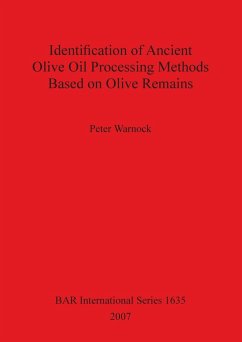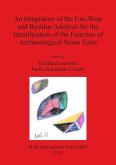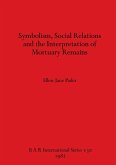This research focuses on the complex issue of olive oil processing and the resulting technological changes associated with the olive oil industry during this industry's expansion from a small scale domestic to large-scale industrial technology during the Chalcolithic through Iron Ages (c. 4300-586 BC) in Syro-Palestine. The ultimate goal is to see if the level or type of olive oil technology used at sites can be determined based on their olive remains. However, before this could occur, the author prepares a methodology, the components of which include 1) an ethnographic study investigating how traditional oil pressing and processing affect olive remains, and the incorporation of those remains into the archaeological record, and 2) experimental studies to determine how different processing methods might affect olive remains and their incorporation into the archaeological record. The results from the experimental and ethnographic studies are then applied to archaeological remains from a Late Neolithic site to determine the possible type of processing technology. The type of processing indicated by the comparison of the experimental to the archaeological remains, crushing in a small basin, matches the olive oil processing artifacts and features found at the site. The methods used in this study can be applied to other paleoethnobotanical remains and technologies. Contents: Introduction; Origins and early history of the olive; Ethnographic research; Experimental research; Testing an archaeological sample; Olive oil, trade, and the city state; Conclusions.
Hinweis: Dieser Artikel kann nur an eine deutsche Lieferadresse ausgeliefert werden.
Hinweis: Dieser Artikel kann nur an eine deutsche Lieferadresse ausgeliefert werden.








